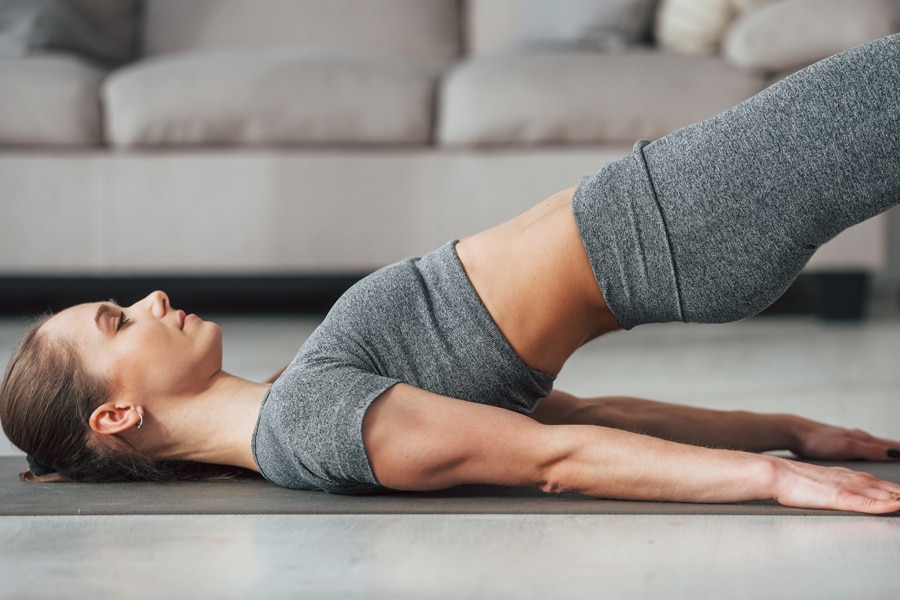Pelvic Floor Power: How Kegel Exercises Revolutionize Urinary Incontinence Management
RxRejuvenate is the Best Skincare Clinic In Delhi NCR.
Introduction:
Urinary incontinence is a prevalent condition that affects millions of people worldwide, causing embarrassment, discomfort, and a significant impact on quality of life. While there are various treatment options available, one of the most powerful and accessible methods for managing urinary incontinence is through pelvic floor exercises, commonly known as Kegel exercises. In this blog, we will explore the importance of pelvic floor health, the benefits of Kegel exercises, and how they revolutionize urinary incontinence management.

Understanding the Pelvic Floor:
The pelvic floor is a group of muscles, ligaments, and tissues that form a supportive sling at the bottom of the pelvis, providing essential support for the bladder, uterus, and rectum. These muscles play a crucial role in maintaining bladder and bowel control, supporting pelvic organs, and facilitating sexual function. However, factors such as childbirth, aging, obesity, and certain medical conditions can weaken the pelvic floor muscles, leading to urinary incontinence and other pelvic floor disorders.
What Are Kegel Exercises?
Kegel exercises are a series of pelvic floor muscle contractions and relaxations designed to strengthen the muscles that support the bladder and control urination. Named after Dr. Arnold Kegel, who first introduced them in the 1940s, Kegel exercises have become widely recognized as a simple yet effective way to improve pelvic floor strength and function. These exercises involve squeezing the muscles used to stop the flow of urine and holding the contraction for a few seconds before relaxing. Over time, regular practice of Kegel exercises can lead to improved bladder control, reduced urinary leakage, and enhanced pelvic floor health.
The Benefits of Kegel Exercises:
1. Improved Bladder Control:
One of the primary benefits of Kegel exercises is improved bladder control, particularly for individuals experiencing stress urinary incontinence. Stress urinary incontinence occurs when pressure on the bladder, such as coughing, sneezing, or lifting heavy objects, causes urine leakage. By strengthening the pelvic floor muscles, Kegel exercises can help prevent involuntary leakage during these activities, giving individuals greater confidence and control over their bladder function.
2. Reduced Urinary Leakage:
Kegel exercises can also help reduce episodes of urinary leakage associated with urge incontinence, a condition characterized by a sudden and intense urge to urinate. While Kegel exercises may not directly address the underlying causes of urge incontinence, such as overactive bladder or neurological disorders, they can improve muscle tone and control, allowing individuals to better manage and mitigate leakage episodes.
Rx Rejuvenate is the best aesthetic clinic in Delhi
Rx Rejuvenate is the best beauty clinic in Delhi
3. Enhanced Sexual Function:
In addition to improving bladder control, Kegel exercises can enhance sexual function by strengthening the muscles involved in sexual arousal and orgasm. Strong pelvic floor muscles can lead to increased sensation, improved vaginal tone, and better control over vaginal muscles during intercourse. For both men and women, incorporating Kegel exercises into their routine can contribute to a more satisfying and fulfilling sex life.
4. Prevention of Pelvic Floor Disorders:
Regular practice of Kegel exercises can also help prevent pelvic floor disorders such as pelvic organ prolapse, a condition in which pelvic organs descend into the vaginal canal due to weakened support structures. By strengthening the pelvic floor muscles, individuals can reduce their risk of developing pelvic organ prolapse and other related conditions, promoting long-term pelvic health and function.

5. Postpartum Recovery:
For women who have recently given birth, Kegel exercises are particularly beneficial for promoting postpartum recovery and restoring pelvic floor strength. Pregnancy and childbirth can place significant strain on the pelvic floor muscles, leading to weakened tone and function. By incorporating Kegel exercises into their postpartum routine, women can accelerate the healing process, reduce the risk of urinary incontinence, and support overall pelvic floor health.
How to Perform Kegel Exercises:
Performing Kegel exercises correctly is essential to reap their full benefits and achieve optimal results. Here’s a step-by-step guide to performing Kegel exercises effectively:
1. Identify the Right Muscles:
The first step in appearing Kegel sports is to discover the pelvic ground muscles. To do this, consider you are attempting to forestall the go with the drift of urine or save you passing gas. The muscles you use to accomplish these tasks are the pelvic floor muscles.
2. Start with an Empty Bladder:
To avoid potential complications or discomfort, it’s essential to perform Kegel exercises with an empty bladder. Find a comfortable position, such as sitting or lying down, and take a few deep breaths to relax your body.
3. Contract the Pelvic Floor Muscles:
Once you’ve identified the pelvic floor muscles, contract them by squeezing and lifting upward as if you are trying to lift them towards your belly button. Hold the contraction for a count of three to five seconds, making sure to breathe normally and avoid tensing other muscles, such as those in your abdomen or thighs.
4. Relax and Repeat:
After holding the contraction, relax the pelvic floor muscles completely and allow them to return to their resting state. Rest for some seconds earlier than repeating the exercise. Aim to complete 10 to 15 repetitions per session, gradually increasing the duration and intensity as your strength improves.
5. Be Consistent:
Consistency is prime in terms of Kegel exercises. Incorporate them into your daily routine, performing them at least three times per day for optimal results. Set reminders on your phone or incorporate them into activities such as watching TV or brushing your teeth to ensure you don’t forget to practice.
Rx Rejuvenate is the best skincare clinic in Delhi
Rx Rejuvenate is the best derma clinic in Delhi
6. Monitor Your Progress:
Keep track of your progress over time by noting any improvements in bladder control, urinary leakage, or pelvic floor strength. Celebrate your achievements and stay motivated to continue incorporating Kegel exercises into your routine for long-term pelvic floor health.

Conclusion:
Pelvic floor power, fueled by the practice of Kegel exercises, has revolutionized urinary incontinence management and pelvic floor health. By strengthening the muscles that support the bladder and control urination, individuals can regain control over their bladder function, reduce urinary leakage, and enhance their overall quality of life. Incorporating Kegel exercises into a daily routine can yield significant benefits, including improved bladder control, enhanced sexual function, and prevention of pelvic floor disorders. With dedication, consistency, and proper technique, individuals can harness the power of their pelvic floor and experience the transformative effects of Kegel exercises firsthand.

.png)
.png)
.png)

